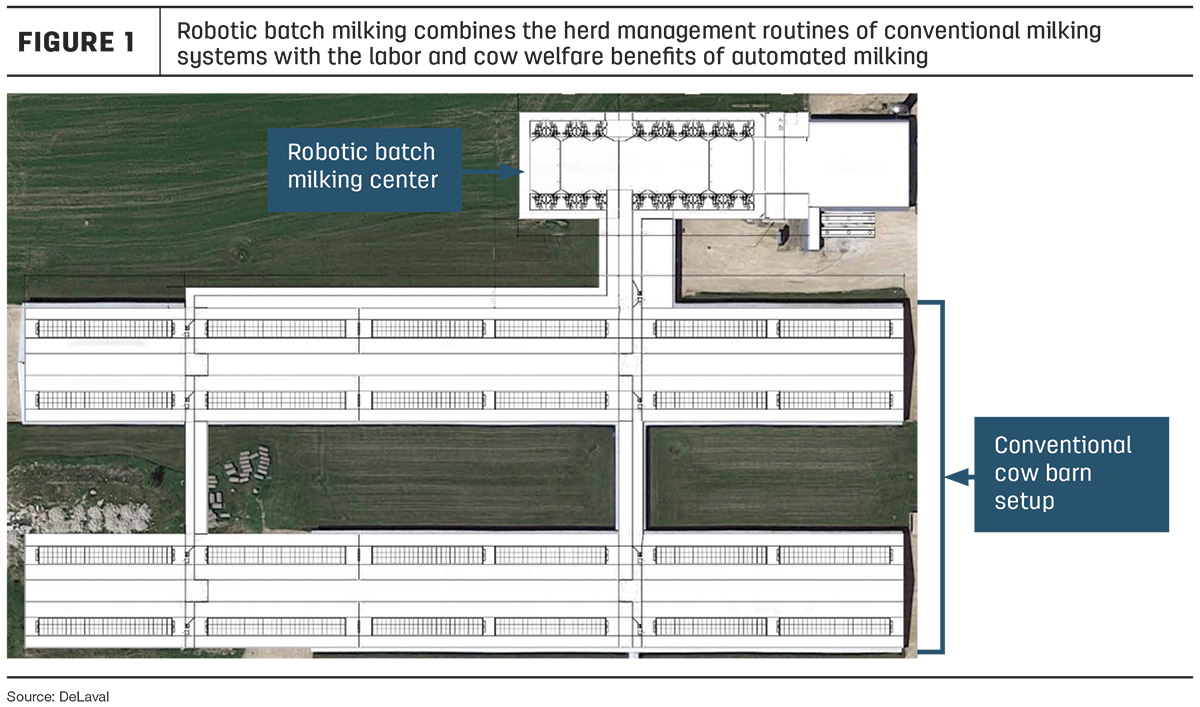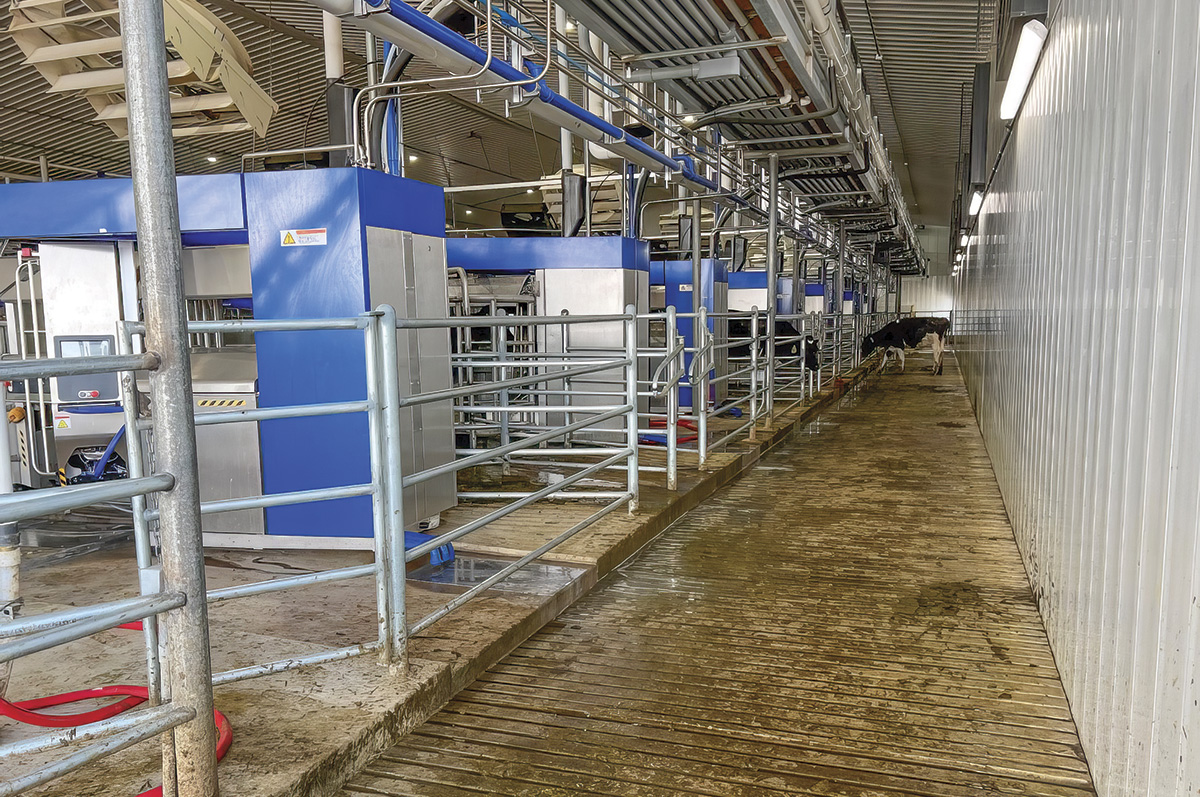Robotic batch milking was introduced some years ago, but interest in this type of milking setup started gaining serious traction in the last year or two. Here’s what you need to know.
Is robotic batch milking a good fit for everyone?
After more than two decades of experience milking robotically, it is clear automated milking systems offer advantages in labor and animal welfare. When producers considering a new dairy facility start looking at different options, the factors that generally help them decide which new milking system to invest in are usually based on how they want to manage their cows and their farm labor.
Most people switching to robotics are coming from a conventional milking system with a parlor or rotary, and some people like the way employee tasks are done within a conventional setup. They have seen voluntary milking systems introduced within their local dairy communities are working 24-7.
Although they like what robotics offers in terms of consistent milking of the cow and delivering data to the farmer, they do question some of the tasks that come along with voluntary milking management. Those with conventional milking systems have the advantage of knowing their cows’ milking schedule and milking frequency. They may also prefer to clean stalls in the main barn and manage cows in different types of groups compared to what voluntary robotic groups offer.

Are there any farms using this type of system today?
There are more than a dozen farms around the world using batch milking, and one in North America is Rancho Pepper Dairy in Texas. This facility is currently milking 2,100 cows with 22 robots in a double-11 parallel parlor-style setup. This farm chose batch milking because it offered them consistent help milking their cows throughout the year. They already were grouping their cows in pens and pasturing their cows as an organic milk producer. After visiting a batch milking farm in Italy, their decision was made as the milking was done automatically through the robots, but the tasks of the workforce were based on a traditional conventional milking setup. This was also important to Rancho Pepper Dairy because they had other farms milking conventionally in parlors, and integrating robotic batch milking would require only a few changes to their standard operating procedures compared to moving to a voluntary robotic milking facility.
At Rancho Pepper Dairy, they milk eight groups of cows twice a day and average 8.5 cows per hour through each robot. To milk 2,100 cows, the milking time is 11 hours and then one hour for a full system wash – all of which is repeated twice a day. Each shift, there is one person moving the cows from the paddock up into the holding area and one person managing the robot area by keeping it clean and assisting with any remaining cows needing to be milked. Dr. Juan Velez, chief agricultural officer with Aurora Organic Dairy, which owns Rancho Pepper Dairy, says the facility is a safe environment for the tasks the employees must fulfill. When the cows are in the holding area, they are not moved by a crowd gate but given the freedom to select any robot they like. Because of this, the herd is relaxed. Their employees now work with calmer, low-stress cows and enjoy a more peaceful environment.

After milking, all cows move through this exit lane at Rancho Pepper Dairy until they reach an automatic sort gate, which sends them back to their pens or a holding area for further attention. This lane is cleaned by a flush system. Photo courtesy of DeLaval.
How will robotic batch milking continue to evolve?
New batch milking facilities are popping up around the world. As these dairies enter the robotic era of their farm, they also see the opportunity to simplify. For many farms, a simple operation means having an attractive place for employees to work and less complexity when training new staff. They are looking to enhance sustainability and work as efficiently as possible while maintaining good animal welfare – an increasingly important part of a dairy farm.
That simplicity also carries over into the way these facilities are designed. Often, robots are lined up in a straight line or in a "U" formation, which makes installation easy but still good for the cow to enter and exit the milking center.
Managing cow health is key in the post-sort area of any parlor or rotary. In a robotic batch milking facility, there is one sort area after the cow exits the robot. All cows exit via the same lane with a sort gate that can put them into a holding area where breeding and other health-related actions can be performed. The single exit lane also makes it possible to have one footbath to manage compared to multiple footbaths in a voluntary robotic milking system. This makes it easier to properly maintain the footbath and keep it viable by having only one unit to add new product to.
Automated milking has been around for 25 years, and the way cows move to the robots has evolved over that time. This progress will continue as automated milking systems are used to improve labor requirements, work routines, and the work environment on the farm – all while ensuring the animal welfare of the herd remains high.






